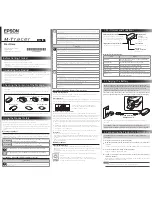
27
should start using the data from the differential beacon receiver. See the
“DGPS Beacon Receiver Status” section for more information.
GPS/DGPS INFORMATION SCREENS
Note: These screens will have only partial or no data if the GlobalMap 2000
is receiving its data from another navigation receiver through the NMEA
0183 input. You must have a Lowrance GPS module connected to the
mapping unit in order to fully use the satellite information screen.
This screen shows technical data about each satellite in view. This
includes data from the GPS model which shows the location of each
satellite in the sky, it’s identification number and more. To see this display,
press the MENU key, then press the key adjacent to the “ Status Screen”
label. The screen shown below appears.
The GPS receiver’s status
shows in the upper left corner
of the screen. This tells you if
the unit is in the 2D mode (po-
sition only), 3D mode (position
and altitude), or if DGPS is
operational. Your present po-
sition, altitude, time, and date
show beneath the status.
Beneath the date display is the
fix status. The fix quality has a
range from 0-9. 9 is the best, 0
the worst. As the fix number decreases, the position’s “jitter” increases.
Jitter is the small position changes your present position symbol makes
when you’re not moving. This movement is normal and happens in all
electronic navigation equipment.
The satellites that are in view of the receiver show at the bottom of the
screen. The Lowrance GPS module will track all of the satellites in view.
Using a multiple channel GPS receiver, it will use up to four satellites to
calculate position. The other channels track the remaining satellites. Every
satellite in the constellation has a number assigned to it, called the PRN.
The PRN is the first row. TRK stands for “track.” If the GPS module is
tracking the satellite, then a “T” is placed in this column. If it’s searching for
the satellite, then a “S” appears. ELV is the elevation (height) of the satellite
above the horizon from your position. AZM is the azimuth or direction of the
satellite from your position. For example, if the azimuth of a satellite is 180
degrees, then it is due south. SNR is the signal-to-noise ratio. This tells you
















































